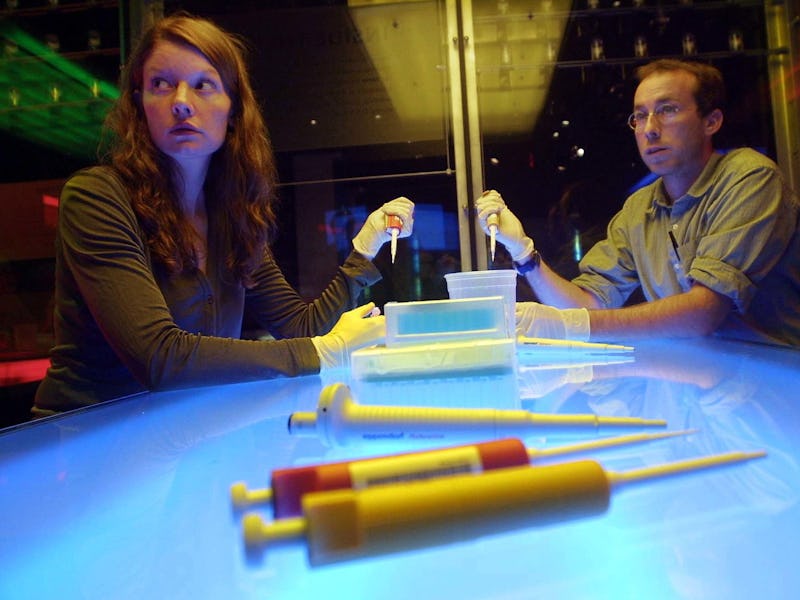Human Gene Editing With CRISPR Could Start as Soon as 2017
A biotech startup plans to use CRISPR gene engineering to treat a rare form of blindness.

While gene editing has recently been used to engineer micropigs and superbeagles, human gene editing has always been the end goal. A biotech startup called Editas Medicine has just announced its plans to achieve that goal as soon as 2017.
At the EmTech conference in Cambridge, Massachusetts this week, Editas CEO Katrine Bosley announced that her company will start clinical trials to treat a rare form of blindness known as Leber congenital amaurosis using the gene editing technique CRISPR, which stands for “clustered regularly interspaced short palindromic repeats,” in two years.
In 2014, Chinese scientists reported using CRISPR to edit the genomes of human embryos, but they were not grown to term. Recently, British scientists applied for permission to do the same. But if Bosley’s work goes as planned, her company will be the first to use CRISPR to edit DNA in humans after they’re born.
The CRISPR gene editing technique, which allows scientists to precisely mix and modify genes, was developed three years ago and has taken the science world by storm with its simplicity and low cost.
Its ability to “fix broken genes,” as Bosley put it, could, in theory, be used to treat any condition caused by a known gene error.
Leber congenital amaurosis, which manifests in infants as the inability to see anything but large, bright shapes, was a prime candidate for treatment with CRISPR. Treatment for the disease will involve injecting CRISPR components into the eye, where it will assemble and delete 1,000 targeted DNA base pairs from a faulty gene in retinal cells.
CRISPR is shown in the below tweet from Steven Max Patterson, reporting from the EmTech conference, as pairs of orange scissors. It works by cutting out the faulty bits of DNA that would eventually give rise to dysfunctional proteins that cause disease.
As gene editing moves rapidly into the human realm, policymakers will need to play catch-up in order to mitigate its implications. If it’s used to edit the genomes of full human embryos — as opposed to discrete organs, like the eye — CRISPR’s changes will be permanent. That is, they’ll be passed on through generations, thus altering human evolution. How — or whether — we should regulate it remains an open question.